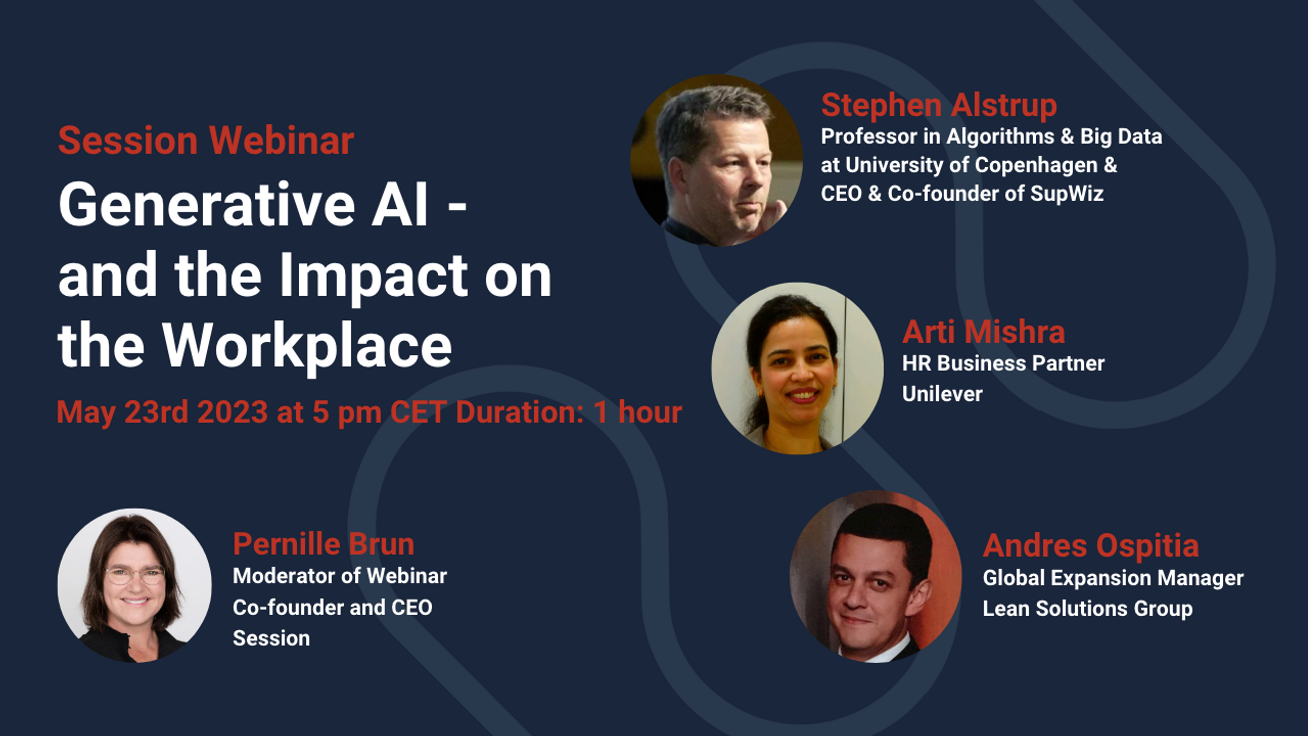As the wave of artificial intelligence (AI) continues to sweep across industries, businesses of all sizes are grappling with the task of integrating this transformative technology into their operations. The integration of this technology is far from simple. It requires strategic planning, ethical considerations, employee education, and continuous monitoring and assessment.
I too have been forced to think deeply about how I, as an HR professional, can best help embrace the opportunities of the new technologies without being blind to the challenges and ethical considerations we must also take into account when asking ourselves how we can benefit from the possibilities and mitigate the risks.
Central to this transition is clear and ongoing communication. An organization's silence is not reassuring to employees. Regular updates on what to expect, potential challenges, and plans for addressing those challenges can provide reassurance and foster trust within the organization.
To help businesses successfully integrate AI, I've outlined a series of questions that I believe everyone should ask. I encourage you to use these as a starting point in your journey towards ethically and mindfully considering the use case and implementation of Generative AI in your workplace.

What is our organization's AI strategy, and how does it align with our overall business objectives?
Defining an AI strategy that aligns with your overall business objectives is the first step towards a successful AI integration. This strategic alignment ensures that AI initiatives will be focused and effective, delivering the maximum value to your business.
How can we promote a culture of responsible AI use within our organization, emphasizing ethical considerations and transparency in our AI practices?
Promoting a culture of responsible AI use involves not just policy and training, but also ongoing conversations and transparency. It's important to engage all employees in this dialogue to ensure that AI is used ethically and responsibly across your organization.
How do we plan to integrate generative AI technologies into our existing processes and systems?
AI should be seen as a tool to enhance your existing processes and systems, not replace them. Planning a phased integration can help smooth the transition and reduce disruption.
What legal, ethical, and regulatory considerations do we need to address when implementing generative AI technologies?
AI raises a host of legal, ethical, and regulatory issues, from data privacy to bias and fairness. It's crucial to proactively address these issues to protect your organization and its stakeholders.
What type of training and education will be needed for our employees to work effectively with generative AI technologies? How can we facilitate and support this learning?
Employees will need both technical training to use AI tools and broader education to understand the principles and implications of AI. Providing resources and support for this learning is key to fostering a confident, competent workforce.
How do we plan to monitor and assess the performance and impact of generative AI on our organization, including any potential biases or unintended consequences?
AI is not a set-and-forget solution. Continuous monitoring and assessment are crucial to ensure that AI is delivering the desired results and to identify and address any issues or biases that may arise.
What is our plan for mitigating the risks associated with generative AI, such as potential job displacement or misuse of the technology?
Planning for potential risks, from job displacement to misuse of technology, is a crucial part of your AI strategy. This could involve everything from reskilling programs to robust security measures.
By addressing these questions, your organization can build a solid foundation for AI integration. Remember, the goal of AI is to enhance human potential, not replace it. With careful planning and ongoing engagement, AI can be a powerful tool for innovation, efficiency, and growth in your organization.
AI is more than just technology – it's a journey of transformation. And like all journeys, it requires careful planning, open communication, and continuous learning. With these questions in hand, I hope you'll be better prepared to navigate your own AI journey.
Happy navigating!
Best,
Arti Mishra












